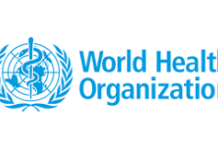Drug regulators across states and Union Territories have recalled the highest number of drug batches in five years during the fiscal year 2023-24, according to data from the ministry of health and family welfare. This fiscal year also saw the highest total value of recalled drugs in five years.
During 2023-24, drug controllers across states and UTs recalled 1,394 drug batches worth Rs. 16.89 crore. This represents a 19 percent increase from the 1,171 batches recalled in the previous fiscal year and a 2.5 percent rise in value from the Rs. 16.47 crore recalled in 2022-23.
From 2019-20 to 2023-24, the total number of recalls from state and UT drug regulators amounts to around 5,759 batches, with the total value exceeding Rs. 36.10 crore.
In the fiscal year 2022-23, regulators tested approximately 96,713 drug samples, identifying 3,053 as Not of Standard Quality (NSQ) and 424 as spurious or adulterated. This was an increase from the 88,844 samples tested in 2021-22, where 2,545 were found to be NSQs and 379 were classified as spurious or adulterated.
Recent efforts by the Central Drugs Standard Control Organisation (CDSCO) and state drug controllers have intensified scrutiny of drug quality and safety. This comes in response to numerous reports about substandard and counterfeit drugs, which have adversely affected the international reputation of Indian pharmaceuticals.
CDSCO, together with state drug controllers, has conducted risk-based inspections of over 400 drug manufacturing sites. These inspections target facilities based on factors such as the number of NSQ drugs, complaints, and product criticality.
Following these inspections, more than 300 actions have been taken by state licensing authorities. The actions include issuing show cause notices, halting production, suspending or canceling licenses, among others, in accordance with the Drugs Rules of 1945.
The central and state governments have implemented various regulatory measures to enhance medicine quality. These measures include amendments to the Drugs and Cosmetics Act, 1940; the establishment of Special Courts for faster trial of offenses under the Act; and an increase in CDSCO staff over the past decade. Recent amendments also require applicants to submit bioequivalence study results when applying for manufacturing licenses for certain oral dosage forms.
Additionally, the Drugs and Cosmetics Rules, 1945, have been updated to mandate joint inspections by central and state drug inspectors before granting manufacturing licenses. The recent amendment also requires evidence of stability and safety of excipients before a manufacturing license is granted. As reported by pharmabiz.com, the Drugs Rules 1945 were revised on December 28, 2023, to update Schedule M concerning good manufacturing practices and requirements for pharmaceutical facilities.
























